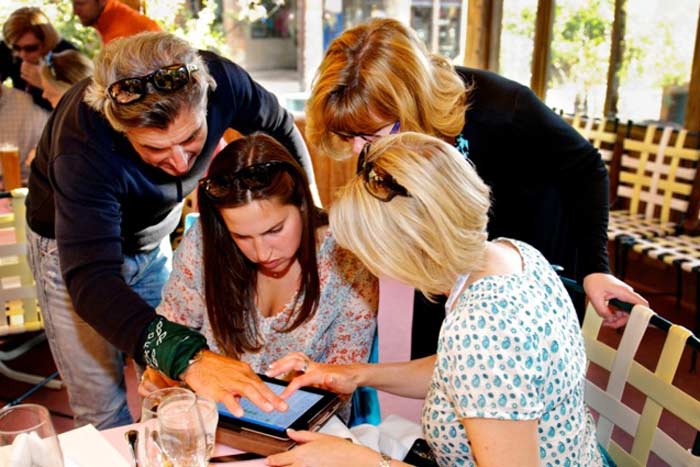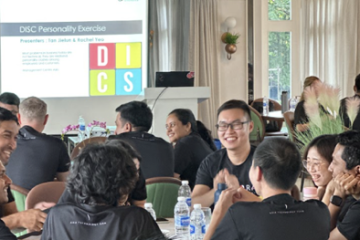Unlock Team Potential: Understanding Dynamics in Training

In today’s competitive corporate environment, effective team dynamics are essential for organizational success. Companies invest in team building and training, including innovative approaches like amazing race team building singapore, to harness employees’ full potential. By understanding communication, conflict resolution, leadership, psychological safety, and role clarity, teams can enhance collaboration, boost productivity, and drive innovation.
What Are the Key Elements of Team Dynamics in Training?
Team dynamics rely on clear communication, conflict resolution, leadership, and psychological safety. When team members understand their roles and responsibilities, accountability increases and transparency improves.
How Does Communication Influence Team Dynamics?
Clear communication allows ideas to flow and ensures directives are understood. In training, it minimizes misunderstandings and aligns team goals. Regular briefings and structured agendas help teams exchange information effectively and resolve issues early.
What Role Does Conflict Resolution Play in Team Performance?
Conflict, though natural, can block performance if unresolved. Using strategies like mediation, negotiation, and structured feedback transforms conflicts into opportunities. Quick resolution fosters stronger relationships and innovation, reducing project delays.
Why Is Leadership Critical in Shaping Team Dynamics?
Effective leaders inspire trust, distribute responsibilities fairly, and empower team members. Transformational and servant leadership styles increase engagement and morale by creating supportive environments that drive team synergy.
How Does Psychological Safety Foster Team Collaboration?
Psychological safety means team members can speak up without fear of retribution. This encourages risk-taking and creative problem solving, reduces turnover, and leads to innovative solutions. A safe space for ideas boosts overall team performance.
What Are the Different Team Roles and Their Responsibilities?
Clearly defined roles prevent duplication of effort and ensure smooth execution of tasks. Whether as facilitators or implementers, well-assigned roles increase accountability and reduce miscommunication, benefiting the entire organization.
How Can Effective Communication Improve Team Dynamics?
Effective communication involves active listening, clear verbal exchanges, and aligned non-verbal cues. It keeps team members informed and engaged, streamlining decision-making and reducing friction.
What Are Active Listening Techniques for Teams?
Active listening requires full concentration on the speaker and thoughtful responses. Techniques like maintaining eye contact and paraphrasing ensure every member feels heard and valued, which fosters trust and collaboration.
How Does Non-Verbal Communication Affect Team Interaction?
Non-verbal cues such as facial expressions and gestures reinforce messages. They bridge cultural differences and validate ideas, boosting team morale and confidence.
What Feedback Techniques Enhance Team Collaboration?
Timely and constructive feedback, using methods like the “sandwich method” or real-time reviews, highlights strengths and improvement areas. Regular feedback sessions can significantly improve performance and foster continuous team development.
How Can Teams Overcome Common Communication Barriers?
Barriers such as language differences or technological issues must be overcome by using simple language, robust communication platforms, and inclusive training exercises. Overcoming these barriers enhances productivity and information flow.
What Are Proven Conflict Resolution Strategies in Team Training?

Evidence-based strategies such as mediation, negotiation, and de-escalation help manage disagreements constructively. These methods maintain harmony and drive performance across the team.
Which Conflict Styles Affect Team Dynamics?
Styles like avoidance, competition, compromise, and collaboration each have impacts on dynamics. Redirecting competitive styles into healthy debate can foster innovative problem solving and improve overall team performance.
How Do Mediation Techniques Resolve Team Disputes?
A neutral mediator encourages active listening and empathy, guiding members to a common understanding. Effective mediation quickly reduces ongoing conflicts and builds cohesive teamwork.
What Negotiation Skills Strengthen Team Cooperation?
Identifying common interests and making clear concessions are key to negotiation. Teams practicing these skills can reach win-win solutions and long-term cooperation, reducing recurring conflicts.
How Can De-Escalation Techniques Prevent Team Conflicts?
By using calming language and structured time-outs, teams can defuse tensions before they escalate. Early intervention through de-escalation minimizes disruptions and supports a smoother workflow.
How Does Building Psychological Safety Unlock Team Potential?

A culture of psychological safety encourages risk-taking and innovative ideas. When teams feel safe sharing thoughts, creativity and problem solving improve, leading to better overall performance.
How Can Leaders Create a Culture of Trust?
Leaders build trust by being transparent, admitting mistakes, and actively listening. This approach encourages honest communication and generates ideas that drive innovation.
Why Is Encouraging Risk-Taking Important for Teams?
Risk-taking is essential for growth. Leaders who reward learning from failure enable teams to experiment and discover breakthrough solutions that traditional methods might miss.
How Should Teams Address Mistakes to Promote Learning?
Mistakes should be viewed as opportunities for improvement. By discussing errors openly and conducting debrief sessions, teams learn from failures and build a culture of continuous improvement.
What Are the Benefits of Psychological Safety on Team Performance?
Psychological safety results in increased creativity, better collaboration, and reduced employeeturnover. Teams that feel secure contribute unique ideas and drive innovative outcomes.
What Are the Essential Team Roles and Responsibilities in Training?
Clearly defined roles are crucial for optimal performance. When facilitators, coordinators, and implementers know their functions, the team benefits from increased accountability and streamlined processes.
How Are Team Roles Defined and Assigned?
Team roles are determined by evaluating individual strengths and personality traits. Using assessments and discussions helps assign roles that maximize each member’s effectiveness.
How Do Understanding Team Strengths Improve Dynamics?
Recognizing individual strengths allows for effective collaboration and task delegation. This results in higher productivity and a well-rounded team where every contribution is valued.
What Collaboration Tools Support Team Role Effectiveness?
Tools like Slack, Trello, and Microsoft Teams facilitate clear communication, task tracking, and accountability. These platforms ensure roles remain defined and progress is monitored in real time.
How Do Team Roles Influence Overall Team Performance?
When everyone understands their role, teams experience fewer conflicts and smoother processes. Clear role definition boosts productivity and leads to faster, higher quality outcomes.
How Does Leadership Influence Team Dynamics in Training?

Leadership drives team dynamics by setting objectives, motivating members, and modeling effective communication. A strong leadership style can propel a team to high achievement.
What Is Transformational Leadership and Its Effect on Teams?
Transformational leaders share a compelling vision that inspires creativity and innovation. This leadership style can significantly boost team morale and overall performance.
How Does Servant Leadership Enhance Team Collaboration?
Servant leadership focuses on supporting team members and nurturing their growth. Leaders who serve foster mutual respect and cooperation, resulting in higher engagement and satisfaction.
What Are Best Practices for Leading Remote Teams?
Remote leadership requires clear protocols, regular virtual meetings, and use of digital tools to maintain connectivity. Consistent check-ins and transparent reporting keep remote teams cohesive and productive.
How Can Leaders Develop Effective Team Leadership Skills?
Ongoing professional development, coaching, and feedback are key. Leaders who invest in their growth through training programs and workshops consistently drive stronger team dynamics.
How Does Training Programs and Assessment Tools Improve Team Dynamics?
Effective training programs, combined with assessment tools, target core areas like communication, conflict resolution, and leadership. Measurable outcomes ensure that training translates into improved team dynamics.
What Are the Features of Effective Team DynamicsTraining Programs?
Interactive elements such as role-playing, simulations, and group discussions make training engaging and relevant. Real-time feedback and follow-up sessions ensure continuous improvement.
How Do Assessment Tools Measure Team Performance?
Performance dashboards, peer reviews, and 360-degree feedback systems provide insights into team progress. These metrics help managers identify strengths and target areas needing improvement.
What Metrics Demonstrate Training ROI on Team Dynamics?
Metrics like productivity levels, employee satisfaction, and conflict resolution rates show the impact of training. Improved collaboration and reduced delays demonstrate a positive return on investment.
How Can Customized Training Address Specific Team Needs?
Tailored training modules that focus on a team’s unique challenges lead to higher engagement and performance. Customized programs better address communication breakdowns and role ambiguities.
| Training Feature | Assessment Tool | Measured Benefit | Example Metric |
|---|---|---|---|
| Interactive Role-Playing | 360-Degree Feedback | Improved conflict resolution | 25% reduction in conflicts |
| Custom Simulation Scenarios | Performance Dashboards | Increased productivity | 20% boost in task completion |
| Real-Time Feedback Sessions | Peer Review Surveys | Enhanced communication | 30% higher engagement scores |
Frequently Asked Questions
Q: How does psychological safetyimpact team performance? A: It enables open idea sharing, leading to increased innovation and collaboration.
Q: What are effective conflict resolutionstrategies in team training? A: Mediation, active negotiation, and de-escalation techniques transform conflicts into constructive discussions.
Q: Why is clear role definition important in team dynamics? A: It ensures accountability, prevents duplication of effort, and streamlines workflow.
Q: How can leaders improve communication within remote teams? A: By using digital tools, regular check-ins, and transparent protocols to keep members connected.
Q: What benefits do customized trainingprograms offer teams? A: They address specific challenges, improve key skills, and result in measurable boosts in productivity and engagement.
Key Takeaways for Unlocking Team Potential in Training
Unlocking team potential through comprehensive training relies on mastering communication, conflict resolution, leadership, and psychological safety. Clearly defining roles and employing effective training programs supported by assessment tools leads to better collaboration, innovation, and lasting success in today’s competitive market.
In today’s competitive corporate environment, effective team dynamics are essential for organizational success. Companies invest in team building and training, including innovative approaches like amazing race team building singapore, to harness employees’ full potential. By understanding communication, conflict resolution, leadership, psychological safety, and role clarity, teams can enhance collaboration, boost productivity, and drive innovation.
What Are the Key Elements of Team Dynamics in Training?
Team dynamics rely on clear communication, conflict resolution, leadership, and psychological safety. When team members understand their roles and responsibilities, accountability increases and transparency improves.
How Does Communication Influence Team Dynamics?
Clear communication allows ideas to flow and ensures directives are understood. In training, it minimizes misunderstandings and aligns team goals. Regular briefings and structured agendas help teams exchange information effectively and resolve issues early.
What Role Does Conflict Resolution Play in Team Performance?
Conflict, though natural, can block performance if unresolved. Using strategies like mediation, negotiation, and structured feedback transforms conflicts into opportunities. Quick resolution fosters stronger relationships and innovation, reducing project delays.
Why Is Leadership Critical in Shaping Team Dynamics?
Effective leaders inspire trust, distribute responsibilities fairly, and empower team members. Transformational and servant leadership styles increase engagement and morale by creating supportive environments that drive team synergy.
How Does Psychological Safety Foster Team Collaboration?
Psychological safety means team members can speak up without fear of retribution. This encourages risk-taking and creative problem solving, reduces turnover, and leads to innovative solutions. A safe space for ideas boosts overall team performance.
What Are the Different Team Roles and Their Responsibilities?
Clearly defined roles prevent duplication of effort and ensure smooth execution of tasks. Whether as facilitators or implementers, well-assigned roles increase accountability and reduce miscommunication, benefiting the entire organization.
How Can Effective Communication Improve Team Dynamics?
Effective communication involves active listening, clear verbal exchanges, and aligned non-verbal cues. It keeps team members informed and engaged, streamlining decision-making and reducing friction.
What Are Active Listening Techniques for Teams?
Active listening requires full concentration on the speaker and thoughtful responses. Techniques like maintaining eye contact and paraphrasing ensure every member feels heard and valued, which fosters trust and collaboration.
How Does Non-Verbal Communication Affect Team Interaction?
Non-verbal cues such as facial expressions and gestures reinforce messages. They bridge cultural differences and validate ideas, boosting team morale and confidence.
What Feedback Techniques Enhance Team Collaboration?
Timely and constructive feedback, using methods like the “sandwich method” or real-time reviews, highlights strengths and improvement areas. Regular feedback sessions can significantly improve performance and foster continuous team development.
How Can Teams Overcome Common Communication Barriers?
Barriers such as language differences or technological issues must be overcome by using simple language, robust communication platforms, and inclusive training exercises. Overcoming these barriers enhances productivity and information flow.
What Are Proven Conflict Resolution Strategies in Team Training?
Evidence-based strategies such as mediation, negotiation, and de-escalation help manage disagreements constructively. These methods maintain harmony and drive performance across the team.
Which Conflict Styles Affect Team Dynamics?
Styles like avoidance, competition, compromise, and collaboration each have impacts on dynamics. Redirecting competitive styles into healthy debate can foster innovative problem solving and improve overall team performance.
How Do Mediation Techniques Resolve Team Disputes?
A neutral mediator encourages active listening and empathy, guiding members to a common understanding. Effective mediation quickly reduces ongoing conflicts and builds cohesive teamwork.
What Negotiation Skills Strengthen Team Cooperation?
Identifying common interests and making clear concessions are key to negotiation. Teams practicing these skills can reach win-win solutions and long-term cooperation, reducing recurring conflicts.
How Can De-Escalation Techniques Prevent Team Conflicts?
By using calming language and structured time-outs, teams can defuse tensions before they escalate. Early intervention through de-escalation minimizes disruptions and supports a smoother workflow.
How Does Building Psychological Safety Unlock Team Potential?
A culture of psychological safety encourages risk-taking and innovative ideas. When teams feel safe sharing thoughts, creativity and problem solving improve, leading to better overall performance.
How Can Leaders Create a Culture of Trust?
Leaders build trust by being transparent, admitting mistakes, and actively listening. This approach encourages honest communication and generates ideas that drive innovation.
Why Is Encouraging Risk-Taking Important for Teams?
Risk-taking is essential for growth. Leaders who reward learning from failure enable teams to experiment and discover breakthrough solutions that traditional methods might miss.
How Should Teams Address Mistakes to Promote Learning?
Mistakes should be viewed as opportunities for improvement. By discussing errors openly and conducting debrief sessions, teams learn from failures and build a culture of continuous improvement.
What Are the Benefits of Psychological Safety on Team Performance?
Psychological safety results in increased creativity, better collaboration, and reduced employeeturnover. Teams that feel secure contribute unique ideas and drive innovative outcomes.
What Are the Essential Team Roles and Responsibilities in Training?
Clearly defined roles are crucial for optimal performance. When facilitators, coordinators, and implementers know their functions, the team benefits from increased accountability and streamlined processes.
How Are Team Roles Defined and Assigned?
Team roles are determined by evaluating individual strengths and personality traits. Using assessments and discussions helps assign roles that maximize each member’s effectiveness.
How Do Understanding Team Strengths Improve Dynamics?
Recognizing individual strengths allows for effective collaboration and task delegation. This results in higher productivity and a well-rounded team where every contribution is valued.
What Collaboration Tools Support Team Role Effectiveness?
Tools like Slack, Trello, and Microsoft Teams facilitate clear communication, task tracking, and accountability. These platforms ensure roles remain defined and progress is monitored in real time.
How Do Team Roles Influence Overall Team Performance?
When everyone understands their role, teams experience fewer conflicts and smoother processes. Clear role definition boosts productivity and leads to faster, higher quality outcomes.
How Does Leadership Influence Team Dynamics in Training?
Leadership drives team dynamics by setting objectives, motivating members, and modeling effective communication. A strong leadership style can propel a team to high achievement.
What Is Transformational Leadership and Its Effect on Teams?
Transformational leaders share a compelling vision that inspires creativity and innovation. This leadership style can significantly boost team morale and overall performance.
How Does Servant Leadership Enhance Team Collaboration?
Servant leadership focuses on supporting team members and nurturing their growth. Leaders who serve foster mutual respect and cooperation, resulting in higher engagement and satisfaction.
What Are Best Practices for Leading Remote Teams?
Remote leadership requires clear protocols, regular virtual meetings, and use of digital tools to maintain connectivity. Consistent check-ins and transparent reporting keep remote teams cohesive and productive.
How Can Leaders Develop Effective Team Leadership Skills?
Ongoing professional development, coaching, and feedback are key. Leaders who invest in their growth through training programs and workshops consistently drive stronger team dynamics.
How Does Training Programs and Assessment Tools Improve Team Dynamics?
Effective training programs, combined with assessment tools, target core areas like communication, conflict resolution, and leadership. Measurable outcomes ensure that training translates into improved team dynamics.
What Are the Features of Effective Team DynamicsTraining Programs?
Interactive elements such as role-playing, simulations, and group discussions make training engaging and relevant. Real-time feedback and follow-up sessions ensure continuous improvement.
How Do Assessment Tools Measure Team Performance?
Performance dashboards, peer reviews, and 360-degree feedback systems provide insights into team progress. These metrics help managers identify strengths and target areas needing improvement.
What Metrics Demonstrate Training ROI on Team Dynamics?
Metrics like productivity levels, employee satisfaction, and conflict resolution rates show the impact of training. Improved collaboration and reduced delays demonstrate a positive return on investment.
How Can Customized Training Address Specific Team Needs?
Tailored training modules that focus on a team’s unique challenges lead to higher engagement and performance. Customized programs better address communication breakdowns and role ambiguities.
| Training Feature | Assessment Tool | Measured Benefit | Example Metric |
|---|---|---|---|
| Interactive Role-Playing | 360-Degree Feedback | Improved conflict resolution | 25% reduction in conflicts |
| Custom Simulation Scenarios | Performance Dashboards | Increased productivity | 20% boost in task completion |
| Real-Time Feedback Sessions | Peer Review Surveys | Enhanced communication | 30% higher engagement scores |
Frequently Asked Questions
Q: How does psychological safetyimpact team performance? A: It enables open idea sharing, leading to increased innovation and collaboration.
Q: What are effective conflict resolutionstrategies in team training? A: Mediation, active negotiation, and de-escalation techniques transform conflicts into constructive discussions.
Q: Why is clear role definition important in team dynamics? A: It ensures accountability, prevents duplication of effort, and streamlines workflow.
Q: How can leaders improve communication within remote teams? A: By using digital tools, regular check-ins, and transparent protocols to keep members connected.
Q: What benefits do customized trainingprograms offer teams? A: They address specific challenges, improve key skills, and result in measurable boosts in productivity and engagement.
Key Takeaways for Unlocking Team Potential in Training
Unlocking team potential through comprehensive training relies on mastering communication, conflict resolution, leadership, and psychological safety. Clearly defining roles and employing effective training programs supported by assessment tools leads to better collaboration, innovation, and lasting success in today’s competitive market.


